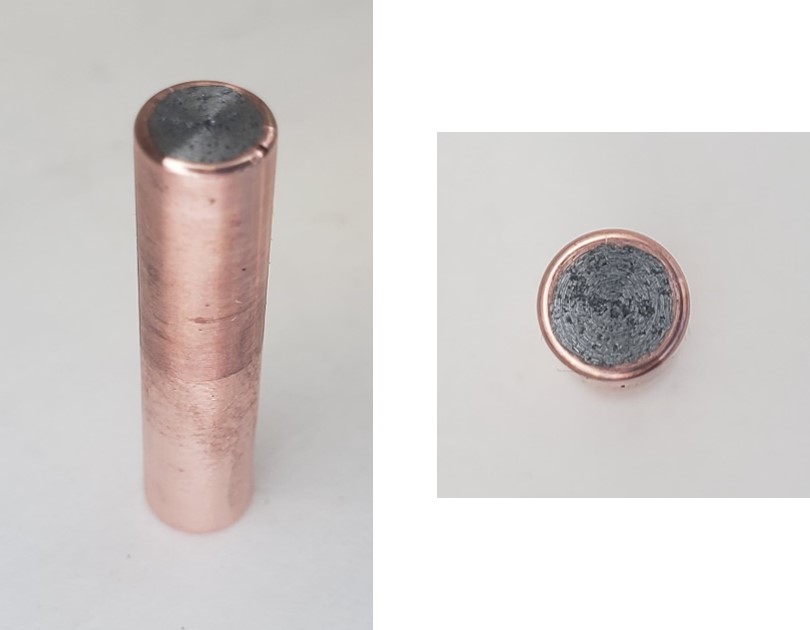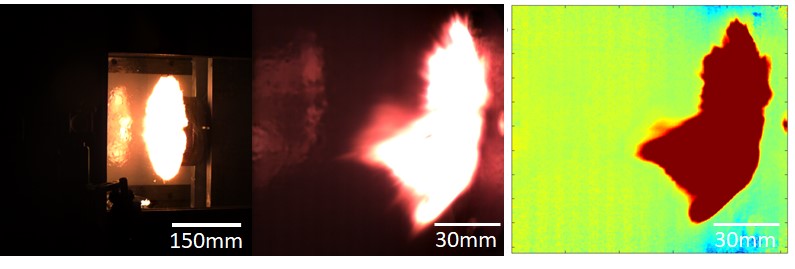Characterizing the Break-up and Reaction of Fragments upon Rapid Impact
In a collaborative effort with the Hopkins Extreme Materials Institute (HEMI), The Defense Threat Reduction Agency (DTRA), and the Army Research Laboratory (ARL), we are developing analytical tools and techniques to image and analyze materials undergoing hypervelocity impacts. We utilize these tools to observe events at millions of frames per second, examine how materials fragment upon impact and predict how those fragments will ignite and combust. For instance, we compare wrought materials to compacts formed through swaging (radial forging).

The videos below compare the hypervelocity impacts of a wrought Al cylinder (top) to a cylinder made from swaging 175 um Al powders (bottom).
High-Density Reactive Materials for Structural Applications
This project collaborates with the Army Research Laboratory (ARL) and the Air Force Research Laboratory (AFRL). Utilizing a combination of ball milling and rotary infeed swaging, we are creating fully dense compacts of composite microstructure reactive materials. We seek to understand the mechanical properties of the materials and utilize those properties to inform the processing parameters. This research focuses on applications in counter-WMD development, commercial joining operations, and oil/gas well monitoring.

We employ the same kinds of hypervelocity experiments with novel diagnostics to study the fragmentation and combustion of fragments of these structural reactive composites, as shown in the figure below.

